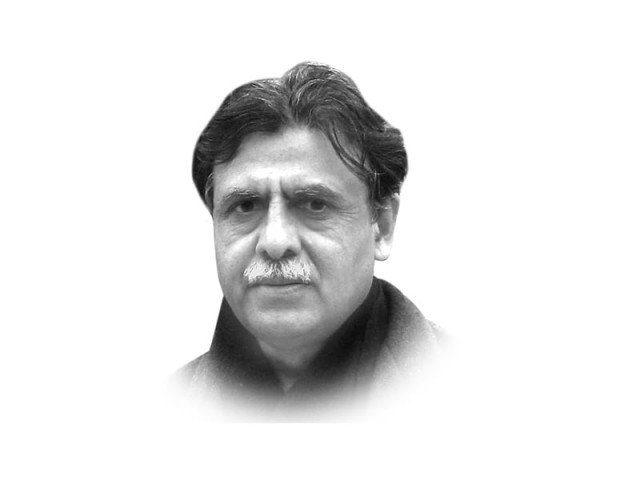
One eventful evening, he was shot dead from close range of some 40 metres outside his hideout. Was he that dangerous that he needed to be killed in a staged encounter? The security forces described the killing as a windfall premium. Quoting an Indian general, Syed Ata Husain, The New York Times recently reported that Wani was not personally associated with violence so much as he was with the resistance leadership. More than a physical phenomenon it was his virtual presence in cyberspace, on social media and on popular websites that irked his detractors. As of today Kashmir’s demography presents a distinct youth bulge with 60 per cent of the population being under 30. That was his real audience. The internet and social media helped him gain about 75 per cent outreach in the Valley, which speaks of his ability to elicit an instant response even on a short call. A young, energetic person with razor-edged sharpness, Wani knew how to make the best use of social media and rally alienated youth around his cause. The Indian security forces’ desperation can be clearly seen as they seemed to have been left with no other option but to physically eliminate a threat which was becoming ominous for them.
Wani, as a student, was way ahead of his peers, a keen cricketer and joyous by temperament. At the age of 15, during the first Intifada in Kashmir in 2010 when ordinary folk exchanged stones with bullets, he was picked up by the forces and subjected to indignity and humiliation. His brother Khalid, a university student, was also roughed up and was beaten to death last year. A highly sensitive boy, Wani was pushed towards a course which turned out to be his final destiny.
Describing the situation, another Indian General, Afsir Karim, a known authority on security matters in occupied Kashmir, is of the view that infiltration from Pakistan has been on the decline while alienation and resentment of Kashmiris with respect to the Indian forces has been on the rise. The General fears a new layer of radicalisation if the union government does not take effective political steps for a meaningful dialogue. Renowned human rights activist Gautam Naulakha has accused New Delhi of resorting to inhuman actions leading to more alienation. India still appears to be in denial mode despite the outcry from sane voices throughout the country. The occupied state is on the boil with the death toll increasing to at least four dozen and over 2,000 victims nursing their wounds. Over 150 Kashmiris, including women, have been blinded with pellet bullets rupturing their retinas. Women closeted in their houses have been sprayed with pellet bullets. Kashmir has turned into a state where the living will now envy the dead. That speaks of the kind of training the Indian security forces receive to manage the most sensitive conflict zone on the planet. There has been a clampdown on the Hurriyet leadership and it has been interned. And the ruling junta’s figureheads appear to have gone into hiding.
Wani is no more on the scene but his profile in fatigue uniform is deeply etched in the minds of his people. In the words of former chief minister Omar Abdullah, he has turned far more dangerous in death than when he was alive. The current generation of fighters now appears to be fired up with a five-letter word: Azadi. In this fight even stones are good enough to repel pellet bullets and militaristic excesses. The homespun movement does not have to look for sponsors and non-state actors from across the LoC.
At this critical stage, Pakistan needs to calibrate its response deftly. Airing the issue at the UN was a timely move, irrespective of the Indian reaction of dubbing Pakistan a host and backer of terrorism. This kind of posturing cannot sweep brazen violations of human rights in the occupied state of Jammu and Kashmir under the carpet. It was a right move on the part of the Foreign Office in appraising the anger within the country to ambassadors in Islamabad. There is need to take up the matter with key states more vigorously. Diplomatic and political support for the cause needs more distinct manifestation on a continuous basis. There is a need to raise vigil along the LoC and guard against provocation and elements which may take advantage of the turmoil and unwittingly play the role of spoilers. The movement in Kashmir has now assumed its own dynamic and we need to keep vigil on so-called non-state actors.
The high-profile, lacklustre parliamentary committee on Kashmir affairs should be disbanded forthwith and replaced with a leaner body consisting of members who can play an effective role and have a closer interface with the outside world. The nation spends around Rs70 million annually on this body. Acknowledging the astute political acumen of the present chairman, Maulana Fazlur Rehman, he can be elevated to some other position, maybe as a senior minister. Chairing this committee under the given circumstances does not sync well with his given skills. The government should be wise enough to bet on people like Mushahid Husain Syed, Sardar Owais Leghari, Makhdum Khusro Bakhtiar and Sahibzada Nazir Sultan. Any one of them could bring in the relevant experience and understanding of international relations in office.
Published in The Express Tribune, July 26th, 2016.
Like Opinion & Editorial on Facebook, follow @ETOpEd on Twitter to receive all updates on all our daily pieces.














COMMENTS
Comments are moderated and generally will be posted if they are on-topic and not abusive.
For more information, please see our Comments FAQ